- Clone
- AA4.1 (See other available formats)
- Regulatory Status
- RUO
- Other Names
- AA4.1, C1qRp, Early B lineage antigen
- Isotype
- Rat IgG2b, κ
- Ave. Rating
- Submit a Review
- Product Citations
- publications
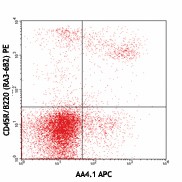
-

Balb/c bone marrow cells stained with CD45R/B220 (RA3-6B2) PE and AA4.1 APC -

Balb/c bone marrow cells stained with CD45R/B220 (RA3-6B2) PE and rat IgG2b, κ APC isotype control
| Cat # | Size | Price | Quantity Check Availability | Save | ||
|---|---|---|---|---|---|---|
| 136509 | 25 µg | 72€ | ||||
| 136510 | 100 µg | 228€ | ||||
CD93 is a 130-140kD C-type lectin like type I transmembrane protein, also known as complement component 1, q subcomponent (C1qR1), C1qRp collectin receptor (C1qRp), or AA4 antigen. It is a receptor expressed on immature B lymphocytes, hematopoietic progenitors and stem cells in adult bone marrow, fetal liver, embryonic yolk sac. CD93 expression level on splenic immature/transitional B cells is much lower than in bone marrow. It is reinduced during plasma cell differentiation and plays an important role in maintaining plasma cells in bone marrow niches. Immature dendritic cells express CD93 and down-regulate this molecule upon maturation, suggesting a role in uptake of particles by DC. It is also expressed on monocytes, macrophages, and endothelial cells. Macrophages from CD93 (-/-) mice had a significant phagocytic defect in the clearance of apoptotic cells in vivo, indicating CD93 may contribute to the in vivo clearance of dying cells. Binding of CD93 to C1q remains controversial.
Product DetailsProduct Details
- Verified Reactivity
- Mouse
- Antibody Type
- Monoclonal
- Host Species
- Rat
- Immunogen
- Pre-B lymphoma 70Z/3
- Formulation
- Phosphate-buffered solution, pH 7.2, containing 0.09% sodium azide.
- Preparation
- The antibody was purified by affinity chromatography and conjugated with APC under optimal conditions.
- Concentration
- 0.2 mg/ml
- Storage & Handling
- The antibody solution should be stored undiluted between 2°C and 8°C, and protected from prolonged exposure to light. Do not freeze.
- Application
-
FC - Quality tested
- Recommended Usage
-
Each lot of this antibody is quality control tested by immunofluorescent staining with flow cytometric analysis. For flow cytometric staining, the suggested use of this reagent is ≤0.25 µg per million cells in 100 µl volume. It is recommended that the reagent be titrated for optimal performance for each application.
- Excitation Laser
-
Red Laser (633 nm)
-
Application References
(PubMed link indicates BioLegend citation) -
- McKearn JP, et al. 1984. J. Immunol. 132:332
- Hanihara-Tatsuzaawa F, et al. 2014. J Biol Chem. 289:30925. PubMed
- Product Citations
-
- RRID
-
AB_2275868 (BioLegend Cat. No. 136509)
AB_2275868 (BioLegend Cat. No. 136510)
Antigen Details
- Structure
- A 130-140 kD C-type lectin like type I transmembrane protein, also known as complement component 1, q subcomponent (C1qR1), C1qRp collectin receptor (C1qRp), or AA4 antigen.
- Distribution
- Expressed during immature B lymphocytes, hematopoietic progenitors and stem cells in bone marrow, immature dendritic cells, monocytes, macrophages, and endothelial cells.
- Function
- CD93 plays an important role in maintaining of plasma cells in bone marrow niches. It may play a role in uptake of particles by DC and the in vivo clearance of dying cells by macrophages.
- Cell Type
- B cells, Dendritic cells, Endothelial cells, Hematopoietic stem and progenitors, Macrophages, Monocytes
- Biology Area
- Cell Biology, Immunology, Innate Immunity, Neuroinflammation, Neuroscience
- Molecular Family
- CD Molecules
- Antigen References
-
1. Steinberger P, et al. 2002. J. Leukoc. Biol. 71:133
2. Chevrier S, et al. 2009. Proc. Nat. Acad. Sci. U. S. A. 106:3895
3. Norsworthy PJ, et al. 2004. J. Immunol. 172:3406
4. Li YS, et al. 1996. Immunity 5:527
5. Szilvassy SJ, et al. 1993. Blood 81:2310 - Gene ID
- 17064 View all products for this Gene ID
- UniProt
- View information about CD93 on UniProt.org
Related FAQs
Other Formats
View All CD93 Reagents Request Custom Conjugation| Description | Clone | Applications |
|---|---|---|
| FITC anti-mouse CD93 (AA4.1, early B lineage) | AA4.1 | FC |
| PE anti-mouse CD93 (AA4.1, early B lineage) | AA4.1 | FC |
| PE/Cyanine7 anti-mouse CD93 (AA4.1, early B lineage) | AA4.1 | FC |
| APC anti-mouse CD93 (AA4.1, early B lineage) | AA4.1 | FC |
| PerCP/Cyanine5.5 anti-mouse CD93 (AA4.1, early B lineage) | AA4.1 | FC |
| TotalSeq™-A0113 anti-mouse CD93 (AA4.1, early B lineage) | AA4.1 | PG |
| TotalSeq™-C0113 anti-mouse CD93 (AA4.1, early B lineage) | AA4.1 | PG |
Customers Also Purchased
Compare Data Across All Formats
This data display is provided for general comparisons between formats.
Your actual data may vary due to variations in samples, target cells, instruments and their settings, staining conditions, and other factors.
If you need assistance with selecting the best format contact our expert technical support team.
-
FITC anti-mouse CD93 (AA4.1, early B lineage)
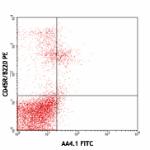
C57BL/6 mouse bone marrow cells stained with CD45R/B220 PE a... -
PE anti-mouse CD93 (AA4.1, early B lineage)
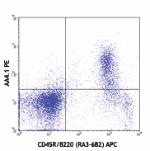
C57BL/6 mouse bone marrow cells stained with CD45R/B220 (RA3... 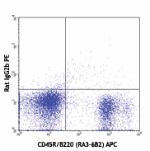
C57BL/6 mouse bone marrow cells stained with CD45R/B220 (RA... -
PE/Cyanine7 anti-mouse CD93 (AA4.1, early B lineage)

C57BL/6 mouse bone marrow cells were stained with anti-mouse... -
APC anti-mouse CD93 (AA4.1, early B lineage)
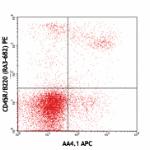
Balb/c bone marrow cells stained with CD45R/B220 (RA3-6B2) P... 
Balb/c bone marrow cells stained with CD45R/B220 (RA3-6B2) P... -
PerCP/Cyanine5.5 anti-mouse CD93 (AA4.1, early B lineage)

C57BL/6 bone marrow cells stained with CD45R/B220 (clone RA3... -
TotalSeq™-A0113 anti-mouse CD93 (AA4.1, early B lineage)
-
TotalSeq™-C0113 anti-mouse CD93 (AA4.1, early B lineage)

 Login / Register
Login / Register 










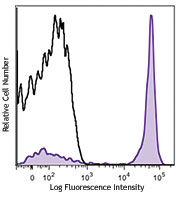
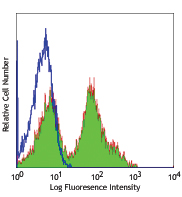

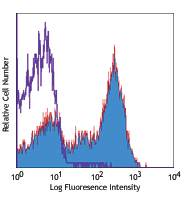



Follow Us